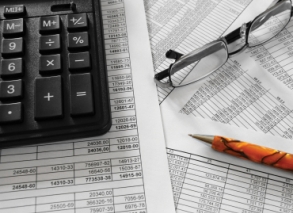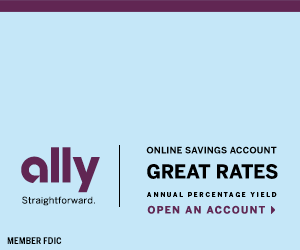Budgeting the Easy Way

- Budget for tomorrow – Budgeting isn’t always fun, but it’s a lot better than spending the last week of every month living off Ramen. Map out your salary and expenses and make sure that you won’t end up in the red. Budgeting isn’t a punishment; it’s just spending wisely.
- Be comprehensive – While budgeting, we tend to make sure that we can cover the big ticket items (e.g., rent) but sometimes forget about the small ones (e.g., haircuts). Be sure to be thorough when setting up a budget. Review prior bank and credit card statements to understand spending habits.
- Budgeting tools – The best way to budget is to use a guide, whether that’s Quicken or creating/downloading an Excel budgeting spreadsheet. Don’t be afraid to geek out.
- Keep at it – It’s really easy to stop budgeting (particularly when using a credit card because you’re not layout out any cash). But be sure to review your accounts at least twice a month to make sure you’re keeping within your budget.
- Don’t forget to save – A big benefit of budgeting is that you can start saving. Include a small amount each month to tuck away into a savings account. This will keep you afloat down the road…or ,enable you to buy a Ferrari.
Even though it sounds like something that no one under the age of 60 would actually do, budgeting is an essential first step in sorting out your personal finances. Until you know how much money is flowing in and out of the coffers each month, it’s difficult to make informed decisions about saving, investing, and tackling student debt. Thankfully, budgeting doesn’t have to involve keeping every receipt or writing a journal entry every time you buy a smoothie. It’s more about being honest with yourself and having a sense of where your money goes. If you are just starting to earn a steady salary and handle your own bills, it takes a bit of time to understand how much everything costs each month. One thing is for sure, though—you’ll be surprised at how much of your paycheck is missing after taxes, rent, food, and other expenditures have been tallied up.
Be Honest About Your Spending
It’s easy to figure out where the bulk of our money goes. Rent, medical insurance, food, etc. Yet somehow you start the month with more than enough to cover the major expenses and still end the month in the hole. Believe it or not, it does actually “all add up,” as your grandfather might have warned you.
To start getting a handle on your spending, review a recent bank statement to figure out what your recurring expenses are. You could even sign up for an account at Mint or Wesabe, two sites that track your debit and credit cards activity and sort the results into different spending categories. Figure out the total amount you earned (after taxes) for the month by adding up paychecks along with any other income such as bonuses, interest from savings, overtime, birthday money from Aunt Jeanie, or weekend panhandling. Just taking five minutes a month to confront these realities can be one of the hardest part about budgeting, because let’s be honest: it can be a bit depressing. But once you’ve got a bit of perspective on where your money goes and how much comes in, you’ll be far more likely to make responsible spending decisions.
Excel with Spreadsheets
For ambitious spendthrifts, the next step is to create a budget worksheet with income and expense categories. Use this sample worksheet or geek out to the fullest and create one using Excel. Make sure to tailor the categories to fit individual hobbies (spelunking) and habits (frappuccinos). Add subcategories where appropriate, such as “3am munchies” to “food.” Use what you’ve learned from looking into your spending patterns to help estimate monthly budget amounts. Choose numbers that realistically reflect actual spending, but set a target that will enable saving. Shoot for 60% of the income going towards necessities and set aside at least 5-10% as savings. See below to get a basic idea of budget percentage distribution.

Fill in the Blanks
At the end of the month, use bank statements and receipts to fill in the worksheet. For items paid once or twice a year (e.g., auto insurance, biannual colon cleansing) divide the payment by the number of months it covers. Answer the question “Are You Smarter Than a Fifth Grader?” by subtracting the total expense from the total income to get net income. This is the money that goes into savings and lines the coffers for that Nintendo Wii or wish-I-was-still-in-college homecoming trip.
It may be a good idea to open a savings account to immediately transfer the money into at the end of each month. Leave it lying in the checking account and it’s likely to get spent on Jimmy Choos or a keg of booze, and even if you don’t buy anything it’s just sitting there when it could be earning interest. If net income is in the negatives, don’t freak out Naoimi Campell-style. After a month or two of budget tracking it’ll be easier to identify where cuts can be made. Don’t discount the small expenditures: that morning coffee runs about $550/yr, 5 days of take-out lunch a week adds up to about $2,000/yr, and that harmless weed habit might cost roughly $2,100/yr (plus you forget about the budget). Check out our Top Ten Money Saving Tips and visit MSN for ways to save.
Finally, note that many people end up out of budget and in debt due to excessive credit card spending. Try to carry only one card and use it sparingly (or at least note charges in your budgeting spreadsheet). If the debt has already accumulated, consolidate to save interest charges. See our article on Building and Maintaining Credit for more information.






Comments
(0)POST YOUR COMMENT